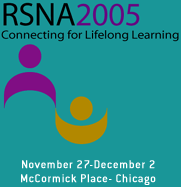
Abstract Archives of the RSNA, 2005
Giles Walter Boland MD, Presenter: Nothing to Disclose
Ben Asfaw, Abstract Co-Author: Nothing to Disclose
Newer and better imaging techniques combined with newer applications means that imaging is now on the critical pathway for most major diseases and conditions. This increasing importance of radiological services has raised the stakeholder expectations at a time of constrained resources. Therefore appropriate asset utilization is critical. This paper evaluates a dynamic scheduling tool that calculates the potential examination throughput per modality, number of days required to reduce patient backlog and the financial implications for the organization.
An Excel spreadsheet model of CT, MRI and US throughput was designed whereby the number scheduled slots could be increased or decreased. The spreadsheet tool permitted changeable data inputs including: type and number of modality units, length of scheduled examination slots, hours of operation, average reimbursement per modality, number of patients on waiting list.
By changing the data inputs, the spreadsheet automatically calculates the potential change (increased or decreased) for each modality in patient throughput/unit time (hour, day, month, year), the time to reduce the waiting list and the revenue implications of the changes. For instance for a CT operation, by changing the scheduled time slot cell in the Excel spreadsheet from 20 minutes to 15 minutes, and increasing the weekday hours of operation from 12 from 16 hours and weekend days from 0 from 8 hours, creates an additional 204 slots/week or 10,608/year with an increase in revenue of $3.2 million (with average reimbursement of $300/scan). A waiting list of 1000 patients would be reduced to zero in 34 days.
This relatively simple Excel scheduling tool permits analysis of current modality operations and how varying different parameters influence patient throughput, patient waiting lists and financial return. This tool is appropriate for administrations and radiology departments alike as they attempt to meet the increasing stakeholder demands placed on radiological services.
Boland, G,
Asfaw, B,
Creating New Imaging Capacity: Dynamic Scheduling Tool to Optimize Throughput and Reduce Waiting Lists. Radiological Society of North America 2005 Scientific Assembly and Annual Meeting, November 27 - December 2, 2005 ,Chicago IL.
http://archive.rsna.org/2005/4418179.html

